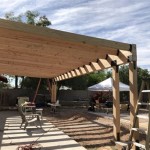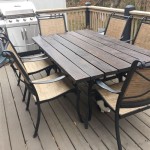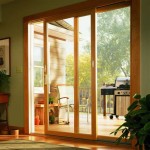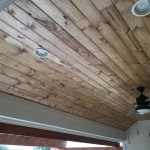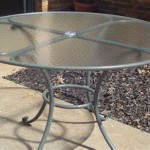```html
Patio Designs: Expanding Living Spaces Outdoors
Patio design encompasses the planning and execution of outdoor living areas, transforming simple spaces into functional and aesthetically pleasing extensions of the home. A well-designed patio not only enhances the property's value but also provides a versatile venue for relaxation, entertainment, and dining. Considering various factors, including space limitations, budget constraints, and lifestyle preferences, is crucial for achieving a successful patio design.
The initial stage involves assessing the available space and determining its optimal use. This includes considering the patio's orientation, exposure to sunlight, and proximity to the house. Larger patios offer greater flexibility in design, allowing for multiple zones dedicated to different activities. Smaller patios, conversely, require careful planning to maximize functionality without feeling cramped.
Materials play a significant role in the overall aesthetic and durability of the patio. Common options include concrete, brick, stone, pavers, and wood. Concrete is a versatile and cost-effective choice, while brick and stone offer a more traditional and elegant look. Pavers provide a wide range of design possibilities, and wood adds warmth and natural beauty. The selection of materials should complement the existing architecture of the house and withstand the local climate conditions.
Key Point 1: Material Selection and Durability
Choosing the right materials is paramount for ensuring the longevity and aesthetic appeal of a patio. Each material possesses unique characteristics that influence its suitability for different environments and design styles. Concrete, known for its strength and affordability, can be customized with various finishes and colors to mimic the appearance of more expensive materials. However, concrete is susceptible to cracking and requires proper sealing and maintenance.
Brick offers a classic and timeless appeal, providing excellent durability and resistance to weathering. Different brick patterns and colors can be employed to create visually interesting designs. However, brick can be more expensive than concrete and may require professional installation. Stone, another enduring option, offers a natural and organic look. Different types of stone, such as flagstone, bluestone, and slate, provide varying textures and colors. Stone is inherently durable but can be porous and require sealing to prevent staining.
Pavers represent a versatile alternative, available in a wide range of shapes, sizes, and colors. Pavers are manufactured from concrete, brick, or natural stone, combining the benefits of each material. Pavers are generally easier to install than poured concrete or stone, and individual pavers can be replaced if damaged. Wood, traditionally used for decking, can also be incorporated into patio designs. Wood provides warmth and a natural aesthetic but requires regular maintenance to prevent rot and decay. Pressure-treated wood or naturally durable hardwoods like cedar and redwood are recommended.
The choice of material should also consider the intended use of the patio. For example, areas intended for heavy foot traffic or outdoor cooking might benefit from durable and stain-resistant materials like concrete or pavers. Areas intended for relaxation or dining might benefit from materials that provide a more comfortable and inviting atmosphere, such as wood or stone.
Key Point 2: Integrating Landscaping and Planting
Landscaping plays a crucial role in softening the hardscape of a patio and creating a more inviting and natural environment. Integrating plants, trees, and shrubs can enhance privacy, provide shade, and add visual interest to the outdoor space. Container gardening, in particular, offers a flexible and adaptable solution for patios of all sizes.
Choosing the right plants for a patio depends on several factors, including the amount of sunlight, the climate, and the desired aesthetic. Plants that thrive in full sun, such as succulents, herbs, and flowering annuals, are well-suited for patios with southern exposure. Plants that tolerate partial shade, such as ferns, hostas, and impatiens, are appropriate for patios with eastern or western exposure. Plants that prefer full shade, such as hydrangeas, begonias, and caladiums, are suitable for patios with northern exposure.
Trees and shrubs can provide shade and privacy, creating a more secluded and comfortable patio environment. Deciduous trees offer shade in the summer and allow sunlight to penetrate in the winter. Evergreen trees provide year-round privacy and wind protection. Consider the mature size of trees and shrubs when planting them near a patio to avoid potential issues with root systems or overhanging branches.
Container gardening allows for greater flexibility in plant selection and placement. Containers can be moved around to create different arrangements or to protect plants from harsh weather conditions. Different types of containers, such as terracotta pots, ceramic planters, and wooden boxes, can add visual interest to the patio. The size of the container should be appropriate for the size of the plant, and the container should have drainage holes to prevent waterlogging.
Vertical gardening, such as living walls or hanging planters, can maximize space in smaller patios and add a unique and eye-catching element. Vertical gardens can be created using a variety of materials, such as pallets, trellises, and wire mesh. The plants chosen for vertical gardens should be able to tolerate limited soil and require minimal maintenance.
Key Point 3: Furniture, Accessories, and Lighting
Outdoor furniture is essential for creating a functional and comfortable patio space. The choice of furniture should reflect the intended use of the patio, as well as the overall design aesthetic. Durable and weather-resistant materials are crucial for ensuring the longevity of outdoor furniture. Common materials include aluminum, wicker, teak, and synthetic fabrics.
For dining areas, consider a table and chairs that are appropriately sized for the space. A small bistro set is suitable for smaller patios, while a larger dining table is ideal for entertaining guests. Comfortable seating options, such as lounge chairs, sofas, and benches, are essential for creating a relaxing and inviting atmosphere.
Accessories, such as cushions, pillows, and throws, can add comfort and style to outdoor furniture. Choose fabrics that are fade-resistant and water-repellent to withstand the elements. Outdoor rugs can define different zones within the patio and add warmth and texture to the space. Fire pits and outdoor heaters can extend the use of the patio into the cooler months.
Lighting is essential for creating ambiance and extending the use of the patio into the evening hours. String lights, lanterns, and spotlights can be used to create a warm and inviting atmosphere. Path lighting can illuminate walkways and prevent accidents. Consider using energy-efficient LED lights to minimize energy consumption.
The placement of lighting fixtures should be carefully considered to avoid glare and ensure adequate illumination. Uplighting can highlight architectural features or landscaping elements. Downlighting can provide task lighting for dining or cooking areas. The use of dimmers allows for adjusting the intensity of the lighting to create different moods.
Incorporating outdoor speakers can enhance the entertainment value of the patio. Wireless speakers are a convenient option, allowing for easy placement and portability. A well-designed sound system can create a relaxing and enjoyable atmosphere for outdoor gatherings.
Ultimately, a successful patio design creates a seamless transition between indoors and outdoors, providing a functional and aesthetically pleasing space for relaxation, entertainment, and enjoyment of the natural environment. Careful planning and consideration of all design elements are essential for achieving a patio that meets the specific needs and preferences of the homeowner.
```
Best Patio Design Ideas For Your Home Designcafe

50 Patio Ideas For The Backyard Of Your Dreams

30 Patio Design Ideas For Your Backyard Worthminer Seating Designs

45 Stylish Small Patio Ideas Designer Patios Tips And Tricks

50 Best Patio Design Ideas For Outdoor And Backyard In 2024 Foyr

Beautiful Backyard Patio Design And Ideas Designcafe

100 Patio Design Ideas 2024 Backyard Garden Landscaping Front Yard House Exterior Modern Gazebo Pavilion

45 Stylish Small Patio Ideas Designer Patios Tips And Tricks

The Best Small Patio Ideas To Eoy This Summer

Backyard Patio Ideas On A Budget Top 5 To Spice Up Your Outdoor Design Decorilla Interior
Related Posts


